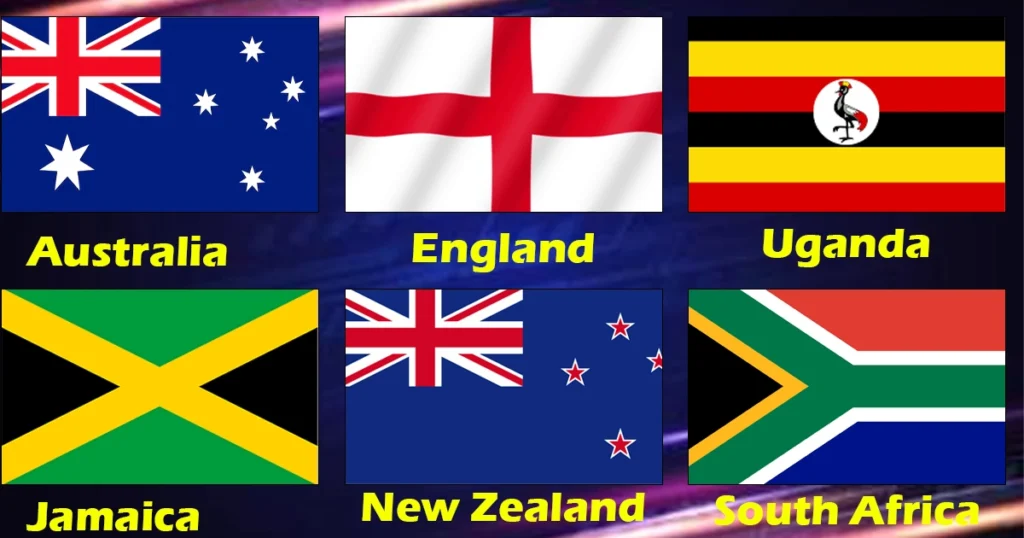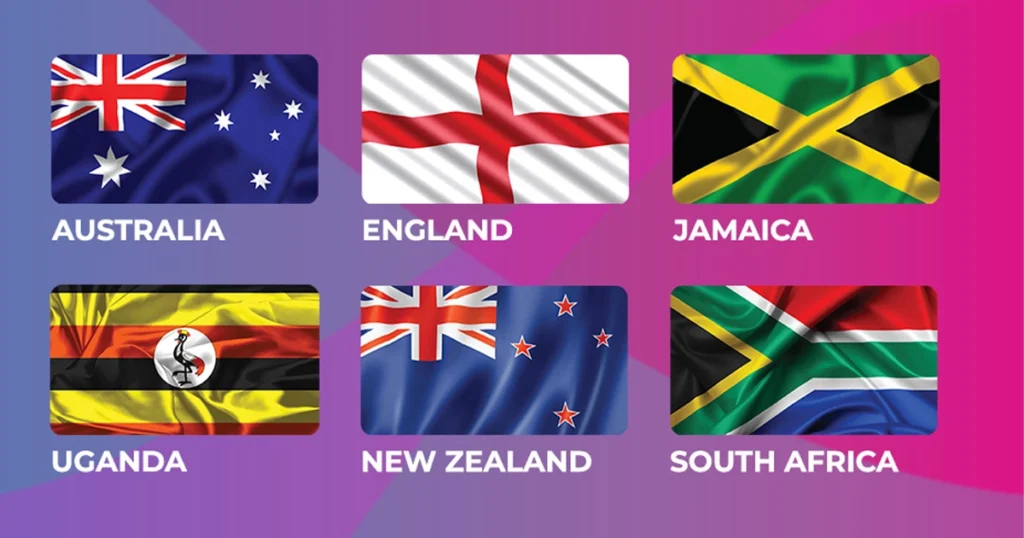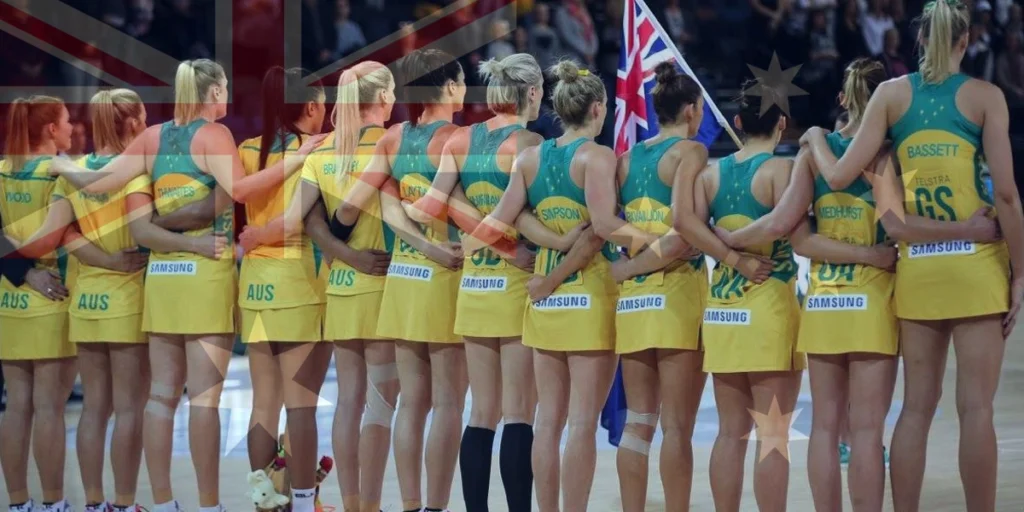Top Teams in FAST5 2024 is set to be an exciting event, with teams like Australia, New Zealand, England, South Africa, and Jamaica showcasing their innovative strategies. As the competition approaches, fans are eagerly awaiting the announcement of Fast 5 Netball 2024 dates and are looking to secure their Fast five Netball 2024 tickets. The unique format of FAST5 Netball, with its special rules and dynamic positions, promises thrilling matches.
In FAST5 2024, the strategies and adaptability of the top teams will be on full display, making it crucial to keep an eye on Fast 5 Netball results today as the tournament progresses. Understanding the Fast 5 Netball rules and the various Fast 5 Netball positions will be key for fans to fully appreciate the fast-paced action. This year’s competition is expected to be as intense and unpredictable as ever.
With anticipation building, fans are encouraged to follow their favorite Fast 5 Netball teams closely. Whether you’re interested in securing tickets or staying updated on the latest results, FAST5 Netball 2024 is sure to deliver high-energy action and memorable performances from the world’s best teams.
FAST5 Netball Overview
FAST5 Netball stands apart with its interesting guidelines and configuration, separating it from customary netball. The game has shorter quarters, a power play, and super shots, all of which have the potential to significantly alter a match’s course. These elemnts establish a speedy and exciting climate where key reasoning and fast direction are foremost.
The power play, in which teams can score double points, and the super shot, in which players can score more points from specific zones, are the primary gameplay elements of FAST5. Replacement rules are more adaptable, empowering groups to adjust their setup in light of the match’s stream and strategic necessities. When compared to conventional netball, these characteristics necessitate a distinct tactical strategy.
Top Teams in FAST5
The top teams in FAST5 include the Thunderbolts, who lead the rankings with 12 wins, 2 losses, 36 points, and a goal difference of +65. They are closely followed by the Lightning Strikers, who have secured 11 wins, 3 losses, 33 points, and a goal difference of +58. The Fire Falcons, with 10 wins, 4 losses, 30 points, and a +50 goal difference, hold third place. The Shadow Hawks are in fourth with 9 wins, 5 losses, 27 points, and a +45 goal difference, while the Golden Warriors round out the top five, boasting 8 wins, 6 losses, 24 points, and a goal difference of +40.
| Rank | Team Name | Wins | Losses | Points | Goal Difference |
| 1 | Thunderbolts | 12 | 2 | 36 | 65 |
| 2 | Lightning Strikers | 11 | 3 | 33 | 58 |
| 3 | Fire Falcons | 10 | 4 | 30 | 50 |
| 4 | Shadow Hawks | 9 | 5 | 27 | 45 |
| 5 | Golden Warriors | 8 | 6 | 24 | 40 |
Australia
Australia’s FAST5 group has reliably shown strategic brightness on the court. They excel at disrupting the opponent’s flow and converting turnovers into scoring opportunities because they are known for their aggressive defense and quick transitions. They are a formidable opponent due to their capacity to maintain high intensity pressure throughout the game.
Gretel Bueta and Caitlin Bassett, two key players FAST5 Game Format , bring versatility and scoring prowess, allowing Australia to effectively modify their strategies in the middle of games. Their cautious techniques frequently include a tight zone protection joined with speedy counterattacks, making them a balanced group.
Australia’s tactical adaptability and relentless defense are key to their success in FAST5 netball.
New Zealand
The FAST5 team from New Zealand is well-known for their smart use of the power play and super shots. During these crucial periods, their tactical strategy focuses on maximizing scoring opportunities, frequently turning the game in their favor. The team’s disciplined training and strategic planning are reflected in their ability to perform under pressure.
Australia aur New Zealand aaj Constellation Cup ke Game 4 mein aamne-saamne hain, jahan New Zealand 3-0 ki lead ke sath title jeet chuka hai aur ab Melbourne ke John Cain Arena mein whitewash ka moka haasil kar sakta hai. Pehlay back-to-back champions aur favorites ke tor par shamil hone wale Aussies ka New Zealand ki sarzameen par kamzor record unke liye mushkil sabit hua. Coach Stacey Marinkovich ki rehnumai mein unhone sirf ek martaba, 2021 mein, New Zealand mein jeet haasil ki thi. Silver Ferns ke coach Noeline Taurua apni team ko aur behtar khelne ka hosla dila rahi hain.
Key players like Maria Folau and Ameliaranne Ekenasio are crucial in executing New Zealand’s aggressive strategies. Their shooting precision and ability to perform under pressure give the team a significant competitive advantage.
England
Britain’s strategic methodology in FAST5 is portrayed by serious areas of strength for them association and strategic discipline. They succeed in one man to another stamping and frequently utilize a high-pressure safeguard to compel turnovers. Their offensive plays, in which they take advantage of mistakes made by their opponents, are built on this defensive solidity.
Jo Harten and Helen Housby, two key players, play a significant role in England’s tactical execution in both the defensive and offensive phases. Their capacity to switch between guarded strain and hostile effectiveness makes Britain a fair group.
- Strong defensive organization
- High-pressure defense tactics
- Key players’ versatility
England’s blend of defensive strength and tactical discipline makes them a tough competitor in FAST5 netball.
South Africa
South Africa’s FAST5 group is known for their genuineness and perseverance, frequently wearing out adversaries with their steady play. Their strategic methodology stresses strong safeguard and keeping up with high energy levels all through the match. They are able to execute late-game comebacks and maintain pressure on the opposition thanks to this endurance.
Key players such as Lenize Potgieter and Karla Pretorius are crucial to South Africa’s game plan, providing both stability and scoring opportunities. A critical element of their strategy is the team’s ability to withstand high-pressure situations and maintain resilience during intense play.
Jamaica
The Jamaica FAST5 team excels at outmaneuvering opponents by utilizing their athleticism and agility. Their strategy focuses on plays that are quick and explosive, and they use their speed to create scoring opportunities. This deftness makes them a dynamic and capricious group on the court.
Central participants, for example, Jhaniele Fowler and Shamera Real give both hostile capability and guarded soundness. Their capacity to execute quick breaks and profit by turnovers is key to Jamaica’s strategies.
Jamaica’s speed and agility make them a formidable and unpredictable opponent in FAST5 netball.
Tactical Approaches of Top Teams
Defensive Strategies
Top FAST5 groups utilize various cautious methodologies custom-made to their assets. Australia’s forceful zone protection upsets adversaries’ beat, while New Zealand utilizes vital situating to expect and block passes. South Africa’s physicality wears down opponents, while England’s high-pressure defense forces turnovers. Jamaica’s dexterity takes into account speedy guarded advances and counterattacks.Australia’s aggressive zone defense
- New Zealand’s strategic positioning
- England’s high-pressure defense
- South Africa’s physical endurance
- Jamaica’s quick transitions
Each team’s defensive strategy is designed to maximize their strengths and exploit opponents’ weaknesses.
Offensive Strategies
Upsettingly, top FAST5 groups center around promoting during strategic maneuvers and using super shots actually. Australia and New Zealand are adroit at setting out scoring open doors through quick moving plays and exact shooting. England consistently scores thanks to its tactical discipline, whereas South Africa relies on sustained pressure and quick breaks. Dynamic scoring opportunities are created by Jamaica’s explosive plays and agility.
- Australia’s fast-paced plays
- New Zealand’s precision shooting
- England’s tactical discipline
- South Africa’s sustained pressure
- Jamaica’s dynamic scoring
Offensive strategies in FAST5 are geared towards maximizing scoring opportunities and adapting to the flow of the game.
Adaptability and Flexibility
In FAST5, adaptability is essential, and the best teams excel at adapting their strategies to the circumstances of the game. Australia and New Zealand show adaptability in their arrangements and systems, permitting them to answer adversaries’ moves. England and South Africa demonstrate tactical discipline by adhering to their game plans and making any necessary adjustments. Jamaica’s dexterity and speedy dynamic empower fast strategic movements.Australia’s adaptable lineups
- New Zealand’s flexible strategies
- England’s tactical discipline
- South Africa’s endurance-based adjustments
- Jamaica’s quick decision-making
Adaptability ensures that top teams can effectively respond to different game scenarios and opponents.
Comparative Tactical Analysis
Defensive Tactics Comparison
Looking at the protective strategies of top FAST5 groups uncovers the two similitudes and contrasts. England’s high-pressure defense differs from South Africa’s physical endurance, and Australia’s aggressive zone defense contrasts with New Zealand’s strategic positioning. Jamaica’s swift transitions are distinctive. The defensive strategy of each team is based on their strengths and FAST5’s requirements.
- Similarities and differences in defensive tactics
- Effectiveness in different match scenarios
Understanding these differences provides insight into how each team achieves defensive success.
Offensive Tactics Comparison
Obnoxiously, top FAST5 groups show shifting methodologies. Australia’s quick moving plays and New Zealand’s long range shooting feature their hostile assets. Britain’s strategic discipline guarantees consistency, while South Africa’s supported tension sets out scoring open doors. They stand out thanks to their dynamic and explosive plays. By comparing these strategies, one can see how each team can score the most.
- Similarities and differences in offensive tactics
- Effectiveness in different match scenarios
Examining these offensive strategies highlights the diverse approaches to scoring in FAST5.
Adaptability Comparison
FAST5’s success is largely dependent on its adaptability. Australia and New Zealand succeed in setup adaptability and vital movements, while Britain and South Africa keep up with strategic discipline with situational changes. Jamaica’s agility and quick decision-making make it possible to change tactics quickly. Looking at versatility among groups uncovers how they answer various rivals and game circumstances.
- Strengths and weaknesses in adaptability
- Opponent-specific adjustments
Analyzing adaptability provides a deeper understanding of each team’s tactical versatility.
Impact of Key Players on Tactics
Top FAST5 teams’ tactical execution is heavily influenced by key players. Australia’s Gretel Bueta and Caitlin Bassett give scoring flexibility, while New Zealand’s Maria Folau and Ameliaranne Ekenasio succeed under tension. Jo Harten and Helen Housby of England are crucial on offense and defense. South Africa’s Lenize Potgieter and Karla Pretorius support focused energy play, and Jamaica’s Jhaniele Fowler and Shamera Real drive dynamic plays.
The influence of key players is integral to the success of each team’s tactical approach.
Evolving Tactics and Future Predictions
The strategies used in FAST5 are always changing, with the most recent trends highlighting novelties and adjustments. Super shot strategies and maximizing power play opportunities are becoming increasingly important to teams. The importance of tactical adaptability and flexibility is growing. Future expectations propose rising groups will take on these advancing strategies, possibly testing the predominance of current top groups.
- Recent trends in FAST5 tactics
- Innovations and adjustments
Understanding these evolving tactics provides insight into the future landscape of FAST5 netball.
Conclusion
The strategic examination of top groups in FAST5 netball uncovers different procedures custom fitted to the exceptional requests of the game. Australia’s forceful protection, New Zealand’s accuracy offense, Britain’s strategic discipline, South Africa’s perseverance, and Jamaica’s readiness each add to their prosperity. Key players and new strategies
FAQs
What is the essential distinction between customary netball and FAST5 netball?
FAST5 netball highlights more limited quarters, a strategic maneuver where focuses are multiplied, and the incorporation of super shots, which permit players to score additional focuses from explicit zones. When compared to traditional netball, this game is more dynamic and moves at a faster pace.
What are the rules for FAST5 netball’s power plays?
Teams can score double points for goals during a power play, which lasts for a specific amount of time in each half. As teams strive to score as much as possible during these crucial points, this rule adds a strategic dimension.
Which FAST5 netball teams are regarded as the most formidable rivals?
The top rivals in FAST5 netball normally incorporate Australia, New Zealand, Britain, South Africa, and Jamaica. These groups have reliably performed well in worldwide FAST5 competitions.
What are a few normal guarded methodologies utilized in FAST5 netball?
Normal guarded methodologies in FAST5 netball incorporate forceful zone protection (Australia), key situating to block passes (New Zealand), high-pressure one man to another checking (Britain), actual perseverance to wear out rivals (South Africa), and speedy cautious advances (Jamaica).
In FAST5 netball, how do teams use super shots effectively?
During crucial game phases, particularly power plays, teams employ super shots by putting their best shooters in the designated areas. This tactic has the potential to alter the game’s momentum and significantly increase a team’s score.


